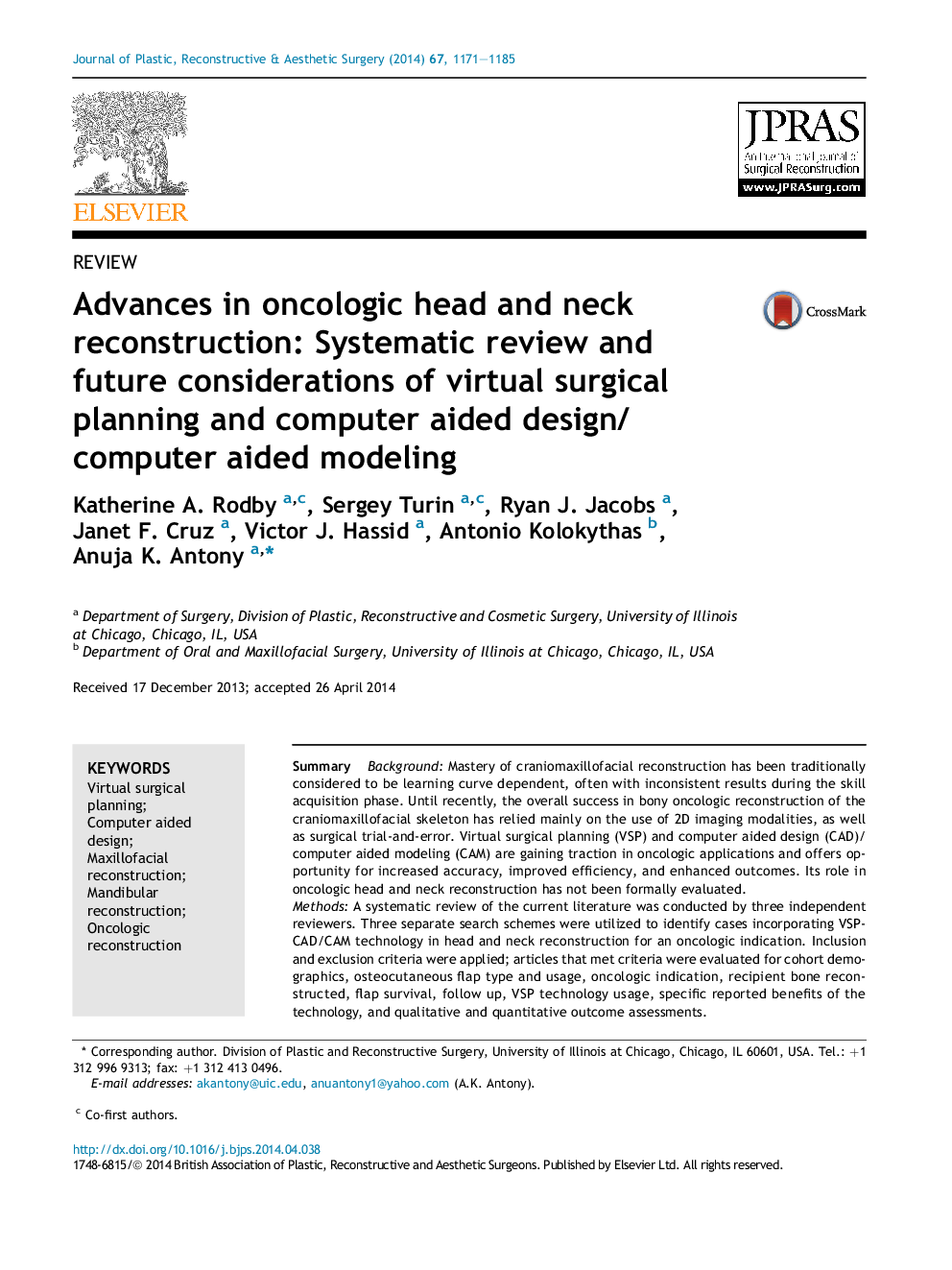| Article ID | Journal | Published Year | Pages | File Type |
|---|---|---|---|---|
| 4117599 | Journal of Plastic, Reconstructive & Aesthetic Surgery | 2014 | 15 Pages |
SummaryBackgroundMastery of craniomaxillofacial reconstruction has been traditionally considered to be learning curve dependent, often with inconsistent results during the skill acquisition phase. Until recently, the overall success in bony oncologic reconstruction of the craniomaxillofacial skeleton has relied mainly on the use of 2D imaging modalities, as well as surgical trial-and-error. Virtual surgical planning (VSP) and computer aided design (CAD)/computer aided modeling (CAM) are gaining traction in oncologic applications and offers opportunity for increased accuracy, improved efficiency, and enhanced outcomes. Its role in oncologic head and neck reconstruction has not been formally evaluated.MethodsA systematic review of the current literature was conducted by three independent reviewers. Three separate search schemes were utilized to identify cases incorporating VSP-CAD/CAM technology in head and neck reconstruction for an oncologic indication. Inclusion and exclusion criteria were applied; articles that met criteria were evaluated for cohort demographics, osteocutaneous flap type and usage, oncologic indication, recipient bone reconstructed, flap survival, follow up, VSP technology usage, specific reported benefits of the technology, and qualitative and quantitative outcome assessments.ResultsThe systematic literature review yielded 87 articles; of these, 33 met inclusion criteria describing a total of 220 cases of oncologic head and neck reconstruction incorporating virtual planning technology. Numerous qualitative benefits of VSP were reported including increased accuracy of the reconstruction (93%), decreased intraoperative time (80%), and ease of use (24%) among others. However, quantitative results using survey data or preoperative/postoperative CT scan comparisons were given for only 33% (3%, 30% respectively) of cases.ConclusionVSP represents an evolving technology that ushers oncological craniomaxillofacial reconstruction into a modern era that holds potential to advance the field with increased reconstructive accuracy, expedition of the surgical phase, and improved outcomes. While qualitative improvements from the technology are delineated, specific quantifiable benefits and cost-benefit analysis are limited and need to be further investigated.
